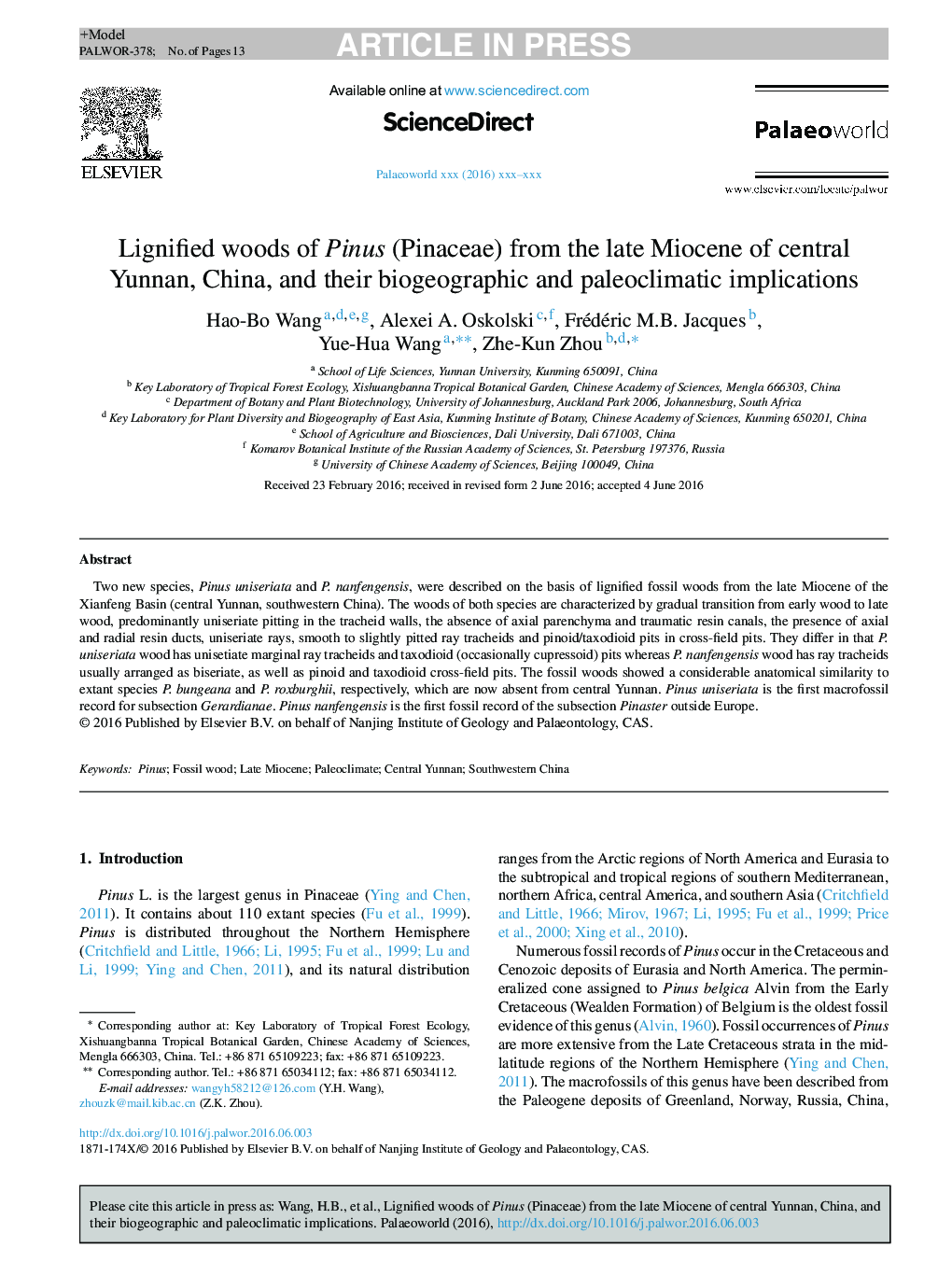| Article ID | Journal | Published Year | Pages | File Type |
|---|---|---|---|---|
| 5788222 | Palaeoworld | 2017 | 13 Pages |
Abstract
Two new species, Pinus uniseriata and P. nanfengensis, were described on the basis of lignified fossil woods from the late Miocene of the Xianfeng Basin (central Yunnan, southwestern China). The woods of both species are characterized by gradual transition from early wood to late wood, predominantly uniseriate pitting in the tracheid walls, the absence of axial parenchyma and traumatic resin canals, the presence of axial and radial resin ducts, uniseriate rays, smooth to slightly pitted ray tracheids and pinoid/taxodioid pits in cross-field pits. They differ in that P. uniseriata wood has unisetiate marginal ray tracheids and taxodioid (occasionally cupressoid) pits whereas P. nanfengensis wood has ray tracheids usually arranged as biseriate, as well as pinoid and taxodioid cross-field pits. The fossil woods showed a considerable anatomical similarity to extant species P. bungeana and P. roxburghii, respectively, which are now absent from central Yunnan. Pinus uniseriata is the first macrofossil record for subsection Gerardianae. Pinus nanfengensis is the first fossil record of the subsection Pinaster outside Europe.
Related Topics
Physical Sciences and Engineering
Earth and Planetary Sciences
Palaeontology
Authors
Hao-Bo Wang, Alexei A. Oskolski, Frédéric M.B. Jacques, Yue-Hua Wang, Zhe-Kun Zhou,
